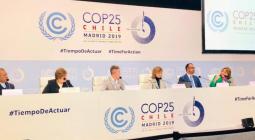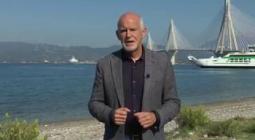On Climate Education and perfect cakes

Educational policy is like trying to bake the perfect cake. As the minister of education of Malawi, Hon. Minister Agnes NyaLonje, said in her speech at the UN Transforming Education Summit, “When you are baking a perfect cake you cannot choose to have flour and leave the rest of the ingredients. You cannot choose to have butter and leave eggs. There is a set of ingredients that must be there to produce the quality you want. This quality is that which addresses the needs of every child.” This wise analogy works both in analysing educational policy, climate resilience and their intersection, climate education.
As climate change concerns international politics more and more, the discussion on education on climate change or climate education, has gained fair ground. Climate education is defined as any formal, non-formal learning activity designed to develop the competencies (Brundiers et al, 2021) required to critically assess and address the causes of the climate crisis and build resilience to its impacts. It is an educational transformation. It aims to foster a whole systems approach on the climate crisis and related social justice issues and thereby empower individuals and communities to take action and challenge existing systems to create transformative change towards a just and sustainable future for people and the planet.
Let us discuss four pillars which are characteristic of this educational transformation.
Along with informational integration (i.e including the climate crisis as a studiable section in the curriculum), educational transformation and climate education can be imagined as cross-disciplinary. This is the first pillar. The interconnectedness of problems in wicked issues such as climate change (Head & Alford, 2015), call for a wider solution-framing, one which reaches across different disciplines and many approaches within them. In secondary education this could signify a new paradigm towards interdisciplinary learning in every curriculum while in tertiary education this idea is commonly associated with a de-segmentation of education, beyond counter-courses. It also suggests a problem based approach which brings together different epistemologies, and methodologies in addressing a particular issue in as many angles as possible.
A second pillar is that of traditional knowledge. Traditional knowledge provides another paradigm for what the means of producing knowledge, sharing knowledge and “storing” knowledge should be. It is a way of reforming the temporality of evidence-based knowledge asserting that the solutions to the world of yesterday are not the solutions of today’s world. That being said, the methods of the past, especially pre-industrial and pre-colonial ones, are a learning opportunity. In this approach evidence-based and scientific learning occurs in relationship to nature, creating expertise in local environments and their relationship with social structures. It does not follow the eternal search for the “truth” but relies on life-long learning.
Moving away from a content based transformation, a third pillar discusses a spatial and infrastructural transformation. The “flour to our cake” as Hon. Agnes NyaLonje would put it. Climate education does not have to take place only in auditoriums, but throughout the educational environment. As Plato suggests, even the walls of a city are educating citizens. By transforming educational facilities with sustainability in mind from the start, high future costs can be avoided as society is forced to adapt to the crisis increasingly. Climate resilient education and infrastructure also assumes net-zero schools, a flexible space, one which allows for educational activities to continue outside the classroom, without the chairs, without a board. One way to achieve this is location-learning, that is learning in the location of observation and where the activity studied takes place. This way, we transform the notion of classroom from that of a laboratory of knowledge (where conditions are replicated to remind the “real world”) into the “real world” itself as the field of knowledge.
The final pillar can be summarised by the following question: How can you teach someone how to bake the cake we keep mentioning, if you have never seen a cake yourself? This is the wicked aspect of climate education, the paradox that teachers are required to teach about circumstances and phenomena that they have not experienced but their students will be asked to adapt to. Without effective, well-trained teachers, students will be ill-prepared to actively contribute to society and address the ongoing climate and biodiversity crisis. Ongoing professional development is crucial in order for teachers to gain the tools necessary to integrate climate education into their respective subjects and disciplines in the context of their educational curricula. Teachers become as such learners alongside their students and cooperatively teach each other adaptation and mitigation practices.
Let’s not ignore that before baking this cake, we have to have a sense on who gets to be a baker. This year, the first day of the United Nations General Assembly was devoted to the Educational Transformation (TES). The summit was meant to be a response to the global educational crisis, and a call for its transformation to “one of equity and inclusion, quality and relevance”. A priority of the agenda concerned the idea that resilient educational transformation requires cooperative processes. Educational stakeholders, with young people as a prioritised group, have a key position on implementation and accountability processes. On the 16th of September 2022 (the Youth Mobilisation day), Youth from all over the world gathered at the United Nations Headquarters to discuss our visions for the future of education. Climate resilient education as described by the TES outcomes, represents this vision to the fullest.
To learn more information about how the TES outcomes reflect climate education goals follow or join the work of Fridays For Future Climate Education
On behalf of FFF Climate Education
Eleni Kaloudi and Eva Papanikolaki
Breakout Session 1: Climate Action for Inclusive Education (2022). Available at: https://www.kaltura.com//p/2503451/embedPlaykitJs/uiconf_id/49754663?iframeembed=true&entry_id=1_mjc0s4la.
Brundiers, K. et al. (2021) ‘Key competencies in sustainability in higher education—toward an agreed-upon reference framework’, Sustainability Science, 16(1), pp. 13–29. Available at: https://doi.org/10.1007/s11625-020-00838-2.
Head, B.W. and Alford, J. (2015) ‘Wicked Problems: Implications for Public Policy and Management’, Administration & Society, 47(6), pp. 711–739. Available at: https://doi.org/10.1177/0095399713481601.
By Eleni Kaloudi et Eva Papanikolaki
cover photo: ©Davide Zanin Photography/Shutterstock





